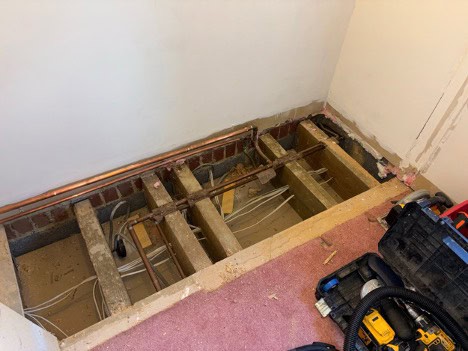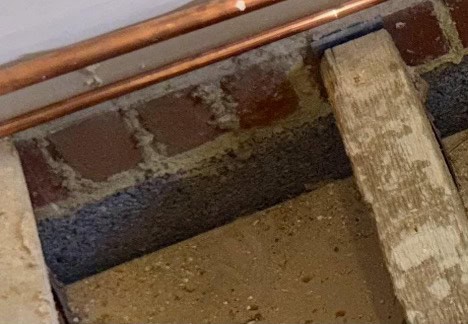At DraughtBusters, we’ve been increasingly concerned about the challenges faced by people living in homes with “plasterboard tents.” These occur when dot-and-dab plasterboard linings create voids between the plasterboard and the underlying blockwork, allowing cold outdoor air to circulate within these gaps.
To address this issue, we’ve explored various solutions to stop the unwanted airflow. One promising approach is to fill these voids with insulation material.
Last year we observed how one homeowner largely remedied the problems in their house by getting foam injected professionally around the perimeter of all external walls, including around window and door openings. While this method was successful, we remained concerned that cold air could infiltrate into the voids through gaps and cracks in the block work. Although a thin layer of beads alone does not provide sufficient insulation value, (hundreds of millimeters of insulation would be needed to do that), the preventative value of removing cold outdoor air infiltration is of great benefit.
We believe that filling the entire void with foam might be a more effective solution. There are new foams on the market that might be suitable, but they may not flow sufficiently well through the void. To overcome this, we decided to inject polystyrene beads into the wall and this proved extremely successful. It was essential to foam the perimeter of the walls before injecting the beads.

This is so that we can see into the void while injecting polystyrene beads behind the first-floor walls to ensure that none were coming out into that void. The bottom gaps between the plasterboard and blocks at floor had all been filled with foam and this prevented the beads from coming out and filling the floor void.

We can also see that the joists have not been built into the wall, but less commonly, are hung on metal joist hangers. The wall looks reasonably airtight with no serious gaps or cracks and ofcourse there are no gaps between the joists and block work where they would normally pocket into the wall.
There is always a problem because the joists shrink after installation. No matter how well built they were, there will always potentially be a draughty gap beside and above them. We deal with this and suggest rectifications in our book ‘Draftproofing and Insulation – A practical guide’.
You can also see a gap between the edge of the plasterboard ground floor ceiling and the block work. The intention is to fill this with foam and to inject polystyrene beads into the walls of the ground floor. We could consider simply pour the polystyrene beads down the gap by setting up a cardboard chute and tipping beads onto it and then maybe using a wire to help them percolate down until no more will go in.

The beads used for injecting into the void between the plasterboard and the blockwork were ‘platinum’ ones which have a better insulation value and are fire retardant treated.
Work in progress
The rear wall had some extra holes that were drilled into the foam seal. The bag of beads has a vacuum cleaner hose dangled into it and we attach a clear plastic bottle so that we can see when the beads stop being sucked up the tube which is when the void is full. A compressor is used with a bead injector gun that works on the Venturi principle like a spray gun to blow the beads into the void.
We plan to do a thermal imaging survey once the filling is complete and any cold areas can be re-injected.
